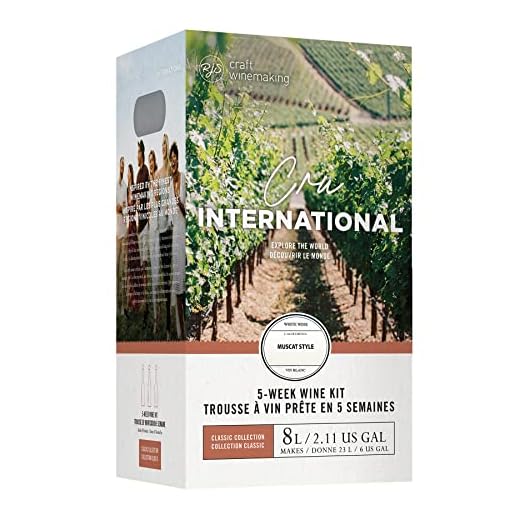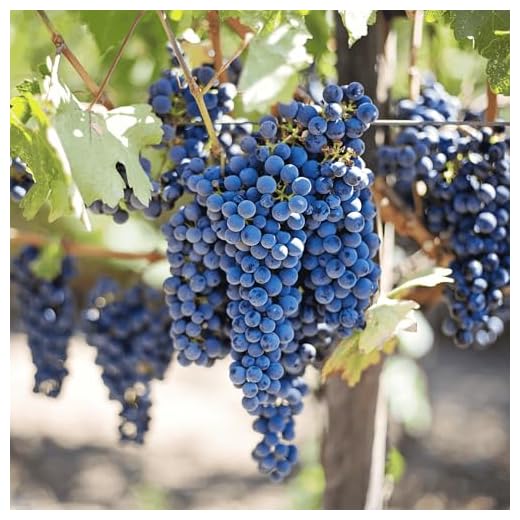



If you’re looking to expand your palate, consider exploring the rich diversity of fermented grape beverages. There are several principal categories, each offering unique characteristics and flavor profiles. Red, white, rosé, sparkling, and dessert varieties dominate the landscape, each with its own nuances that can elevate any dining experience.
Red selections stand out for their robust flavors, driven by grape skins during fermentation. Notable examples include Cabernets and Merlots, each boasting distinct profiles influenced by terroir and winemaking techniques. Whites, typically lighter and crisper, showcase varietals like Chardonnay and Sauvignon Blanc, which can range from buttery to zesty, depending on the region and winemaking style.
Rosé options, often a blend of red and white techniques, provide a refreshing middle ground, perfect for warm-weather pairings. Sparkling selections, such as Champagne and Prosecco, add a celebratory touch to any occasion with their effervescence. Lastly, dessert selections, including Ports and Sauternes, serve as delightful finishes to a meal, showcasing sweetness balanced by acidity.
Each category invites exploration, offering countless varietals and styles. Whether you are a novice or a seasoned enthusiast, the adventure of tasting and learning about these marvelous beverages is boundless. Remember, the best way to appreciate this world is through personal experience and discovery.
Exploring Varieties of Vintages
I’m often asked about the different categories within the realm of fermented grapes. The primary classifications include still, sparkling, and fortified selections. Each of these categories has its own unique characteristics, which can significantly influence your tasting experience.
Still Selections
Within the still selection, you can encounter a wide array of styles based on grape varieties, regions, and production methods. Notable examples include robust reds, crisp whites, and aromatic rosés. Understanding the nuances of varietals such as Cabernet Sauvignon, Chardonnay, and Pinot Noir can enhance your appreciation.
Sparking Offerings
Sparkling options are defined by their effervescence, with Champagne and Prosecco leading the charge. These bubbly delights are perfect for celebrations and can range from bone-dry to sweet. The method of production, such as traditional or tank method, impacts the flavor profile and texture.
Fortified selections like Port and Sherry provide an entirely different experience. These are enhanced with distilled spirits, resulting in higher alcohol content and distinct sweetness, often enjoyed as after-dinner indulgences.
Exploring these categories can uncover a world of flavors and pairings that elevate any dining experience. Whether you prefer the elegance of a still vintage or the celebratory essence of sparkling options, each sip offers a journey through the diverse landscape of fermented grapes.
Exploring Red Wine Varieties
Focus on Cabernet Sauvignon for its bold flavors and structure. This grape thrives in regions like Napa Valley and Bordeaux, offering notes of blackcurrant, cedar, and tobacco. Pair it with grilled meats or rich stews for a delightful experience.
Merlot presents a softer alternative, showcasing plum and chocolate notes. It’s versatile, making it suitable for various dishes, from pasta to roasted vegetables. Opt for a Merlot from Washington State for excellent value.
Pinot Noir Insights
Pinot Noir, often considered the most challenging grape to cultivate, rewards with complexity. Expect flavors ranging from cherry to earthy undertones. Burgundy is the classic region, but Oregon’s Willamette Valley also produces exceptional examples. Match it with salmon or duck for a perfect pairing.
Syrah/Shiraz Characteristics
Syrah, known as Shiraz in Australia, offers a bold profile with spicy and fruity notes. Regions like the Rhône Valley and Barossa Valley excel in producing this varietal. Enjoy it alongside barbecue dishes or hearty stews, emphasizing its rich, peppery qualities.
Exploring these selections will enhance your appreciation of red varietals and their unique characteristics. Always consider food pairings to elevate your tasting experience.
Understanding White Wine Categories
Chardonnay stands out as one of the most versatile options, exhibiting a wide range of flavors from crisp apple to rich butter, depending on the climate and winemaking techniques. For a refreshing choice, consider Sauvignon Blanc, known for its vibrant acidity and notes of citrus and herbs. It pairs beautifully with seafood and salads.
Noteworthy Varietals
Pinot Grigio offers a light, zesty profile, making it perfect for warm weather sipping. Alternatively, Riesling can vary from dry to sweet, with floral aromas and a mineral finish. If you’re seeking complexity, explore the aged versions of Viognier, which develop rich stone fruit characteristics.
Blends and Styles
White blends often combine multiple varietals to create balanced flavors. Look for regions like the Rhône Valley, where blends can showcase the strengths of different grapes. Additionally, the sparkling category, including Prosecco and Champagne, brings a celebratory element, with effervescence enhancing food pairings. Remember, the choice ultimately depends on personal taste preferences and the occasion.
Diving into Rosé Wine Options
Rosé can be a delightful choice for various occasions. Selecting the right kind enhances any meal, especially seafood dishes. Pinot Noir and Grenache are two popular varietals that stand out in this category.
Key Varieties
- Provence Rosé: Known for its pale color and fresh berry notes, it pairs well with light dishes.
- Sangiovese Rosé: Offers a bolder flavor profile with hints of cherry and earthiness, ideal for grilled meats.
- Tempranillo Rosé: Features a rich fruit character, perfect alongside Mediterranean cuisine.
Food Pairings
When enjoying rosé, consider pairing it with dishes such as grilled vegetables, light pasta, or seafood. For instance, if you’re preparing flounder, check out how to cook flounder fillets on skillet for a delicious match.
In essence, rosé offers versatility and can elevate your dining experience. Explore different options to find the one that complements your palate best.
Unpacking Sparkling Wine Types
For those seeking effervescence in their glass, several distinct variations of bubbly await exploration. Here’s a rundown of notable styles.
-
Champagne: Originating from the Champagne region in France, this iconic sparkling drink is crafted primarily from Chardonnay, Pinot Noir, and Pinot Meunier grapes. Look for non-vintage options for everyday enjoyment, while vintage selections offer complexity.
-
Prosecco: Hailing from Italy, Prosecco is made predominantly from Glera grapes. Its charm lies in its lighter, fruit-forward profile with notes of apple and pear. Best served chilled, it pairs well with appetizers and light dishes.
-
Cava: This Spanish sparkling variety employs traditional methods similar to Champagne but often features Macabeo, Xarel-lo, and Parellada grapes. Cava exhibits a refreshing acidity and can range from dry to semi-sweet, making it versatile for various cuisines.
-
Sekt: A German creation, Sekt can be made from a variety of grapes, including Riesling and Pinot Noir. The flavor profile varies widely, from dry to sweeter styles, offering a unique taste experience reflective of its terroir.
-
Franciacorta: This Italian sparkling option utilizes the méthode champenoise, resulting in a refined and complex profile. Made from Chardonnay, Pinot Noir, and Pinot Blanc, it displays rich flavors and a creamy texture, perfect for special occasions.
-
Lambrusco: A lesser-known sparkling red from Italy, Lambrusco can be either dry or sweet. Its fruity and floral notes make it an excellent companion for rich, savory dishes, especially cured meats and cheeses.
Top RatedRegina Cooking Wine, 1 Gallon CasePerfect for seasoning and recipesRegina Cooking Wine enhances flavors in your dishes and is ideal for culinary creation. Conveniently packed in a 1-gallon plastic jug.
When selecting a sparkling option, consider the occasion and the food pairings. Each style provides a unique sensory experience that enhances any gathering or meal.
Examining Dessert Wine Selections
Dessert selections offer a delightful conclusion to any meal, showcasing sweetness and complexity. For a truly memorable experience, consider Sauternes, a luscious option from Bordeaux, renowned for its rich honeyed flavors balanced by vibrant acidity. Pair it with foie gras or blue cheese for an exquisite contrast.
Another exceptional choice is Tokaji Aszú from Hungary, celebrated for its unique botrytis-affected grapes. With notes of apricot and orange zest, this wine complements fruit-based desserts or rich pastries perfectly. If you’re seeking something different, try Ice Wine, particularly from regions like Canada, which provides intense sweetness and a refreshing finish, ideal with fruit tarts or creamy desserts.
Exploring Unique Varietals
For those adventurous in palate, consider exploring Muscat varieties. These aromatic wines range from dry to sweet, offering floral and fruity notes that enhance desserts like panna cotta or sorbet. Additionally, Late Harvest Rieslings deliver intense sweetness with a crisp finish, making them a superb match for spiced cakes or apple pie.
Classic Pairings
Lastly, don’t overlook the charm of Port, especially Ruby and Tawny styles. These fortified wines bring rich flavors of dark fruits and nuts, pairing splendidly with chocolate desserts or cheese platters. Each selection has its own character, providing endless possibilities for delightful pairings.
Identifying Fortified Wine Differences
Fortified beverages distinguish themselves through the addition of spirits, enhancing their flavor profiles and alcohol content. Key categories to explore include Port, Sherry, Madeira, and Marsala. Each variety presents unique characteristics influenced by their production methods and regional origins.
Port
This Portuguese delight boasts rich, sweet flavors, often featuring notes of dark fruits, chocolate, and spices. It comes in several styles: Ruby, Tawny, Vintage, and Late Bottled Vintage (LBV). Ruby is known for its fruit-forward profile, while Tawny offers a more nutty, oxidized taste due to aging in wooden casks.
Sherry
Originating from Spain, Sherry varies from dry to sweet. Fino and Manzanilla are the dry options, showcasing a light, crisp palate with hints of almonds and green olives. In contrast, Oloroso and Cream Sherry present richer, sweeter profiles, often with flavors of caramel, dried fruits, and spices.
| Type | Origin | Flavor Profile |
|---|---|---|
| Port | Portugal | Rich, sweet, dark fruits |
| Sherry | Spain | Varies from dry (almond, olive) to sweet (caramel, dried fruit) |
| Madeira | Portugal | Complex, nutty, with a hint of acidity |
| Marsala | Italy | Rich, sweet, often with caramel and vanilla notes |
Madeira stands out with its unique aging process that involves heating, resulting in a complex, nutty profile with a long shelf life. Marsala, hailing from Italy, offers a range from dry to sweet, often used in cooking and desserts, featuring flavors of caramel and vanilla.
Understanding these distinctions allows for more informed selections, whether for pairing with a meal or savoring solo. Each fortified option presents a unique experience worth exploring.
Recognizing Unique Regional Wine Styles
Exploring specific areas reveals distinct characteristics that define local selections. Each region offers unique terroir, climate, and traditions that shape the profiles of beverages produced there. For instance, Bordeaux in France is renowned for its blends predominantly featuring Cabernet Sauvignon and Merlot, while Burgundy showcases Pinot Noir and Chardonnay in its purest forms.
Italian Heritage
Italy boasts a remarkable diversity of offerings, with regions like Tuscany famed for Sangiovese, often found in Chianti. In contrast, Barolo from Piedmont primarily showcases Nebbiolo, presenting floral and earthy notes. Each Italian territory brings forth unique expressions influenced by local practices and historical significance.
New World Innovations
In the New World, regions such as Napa Valley in California are celebrated for bold, fruit-forward Cabernet Sauvignon and Chardonnay. Meanwhile, regions like Australia and New Zealand focus on varietals like Shiraz and Sauvignon Blanc, respectively, often characterized by their vibrant fruit and approachable styles. Understanding these regional differences enhances appreciation and pairing potential.








